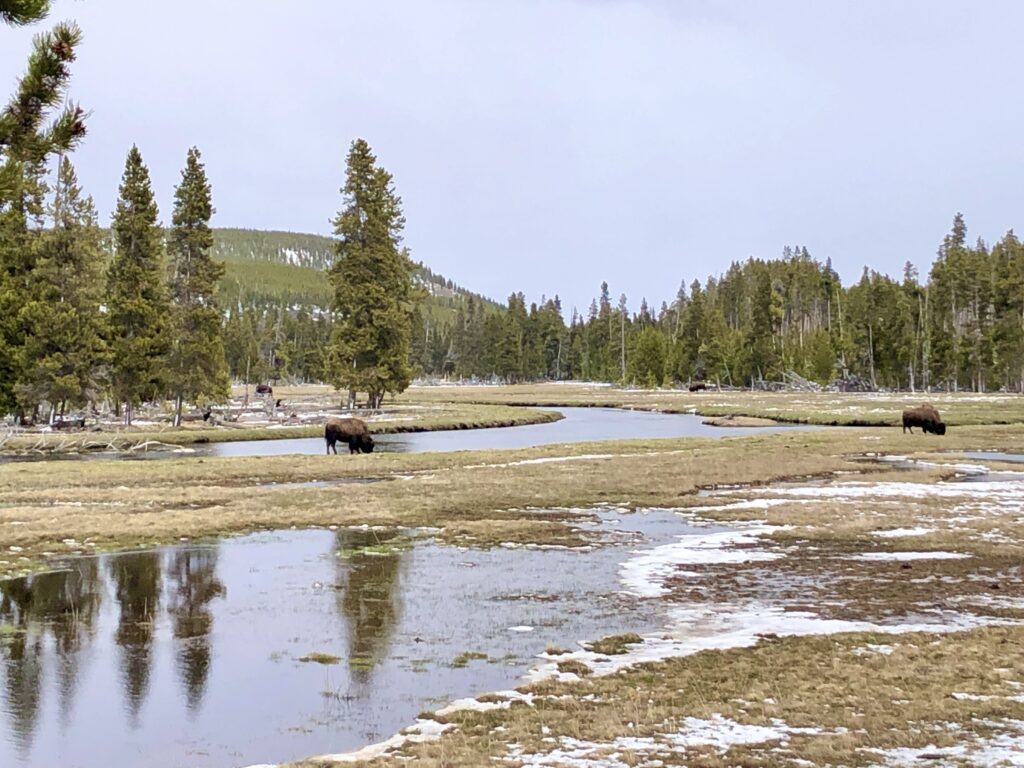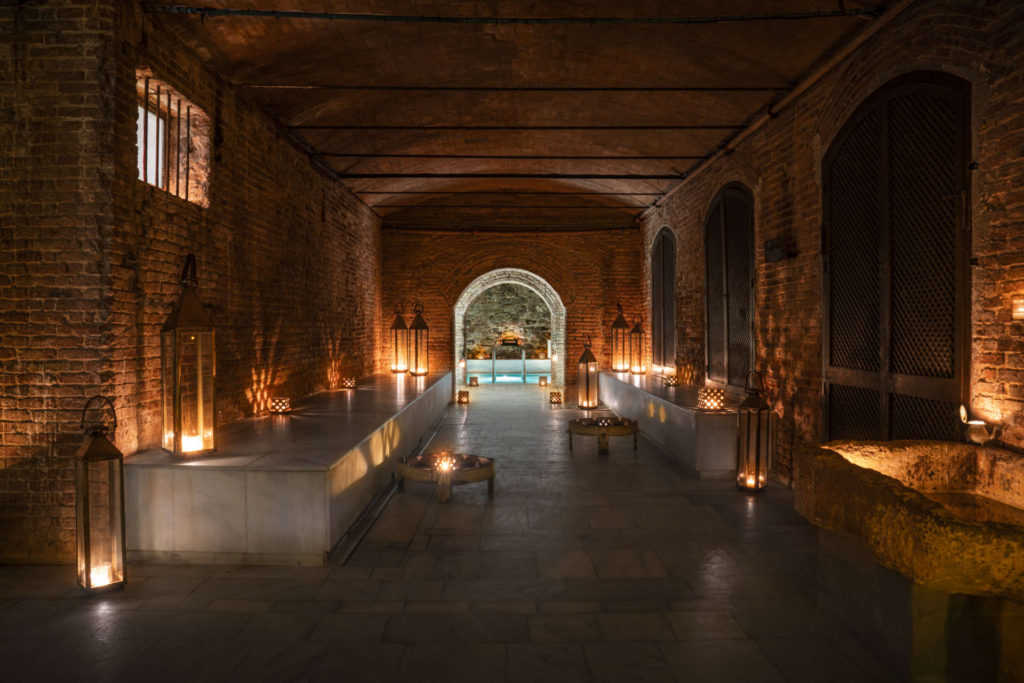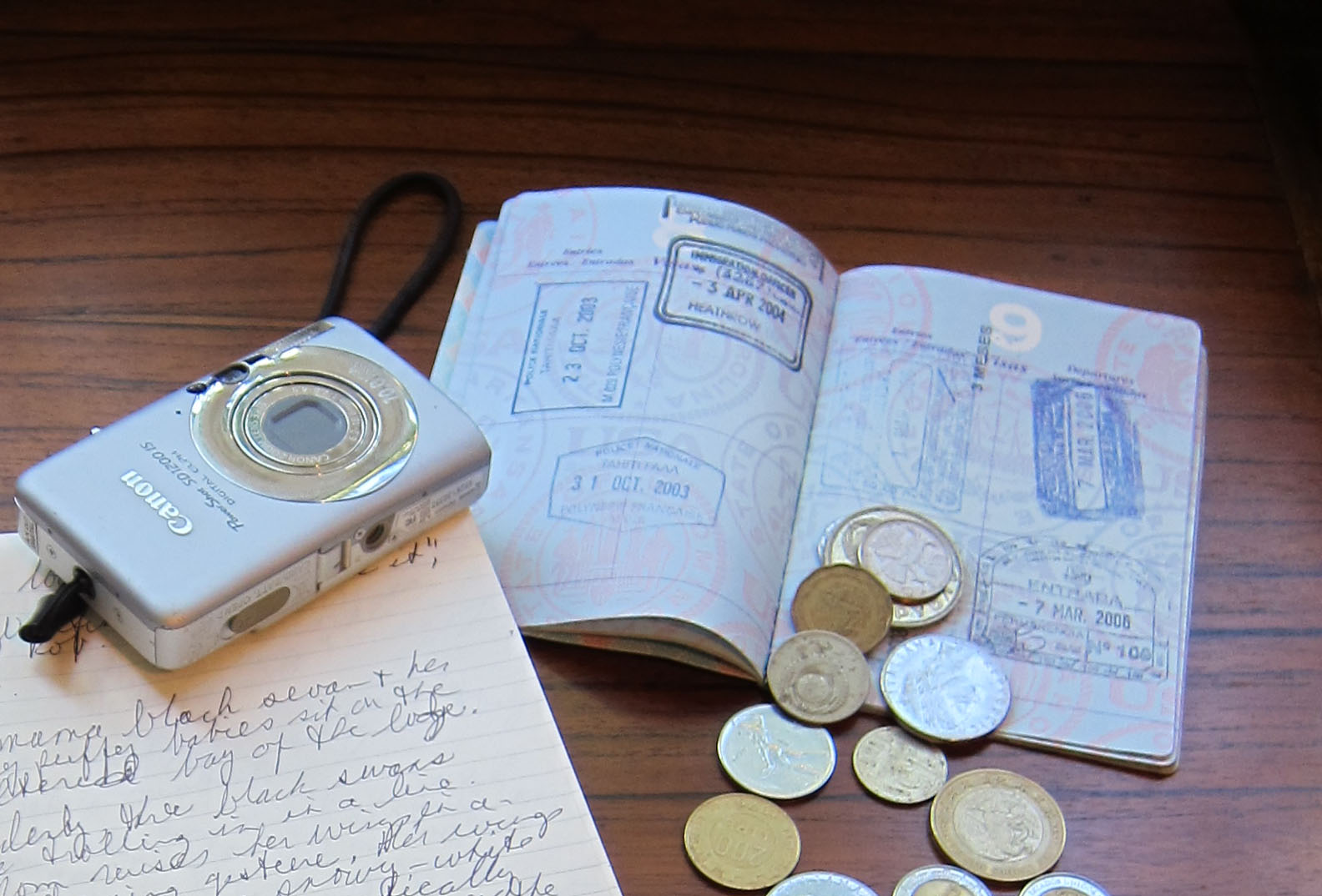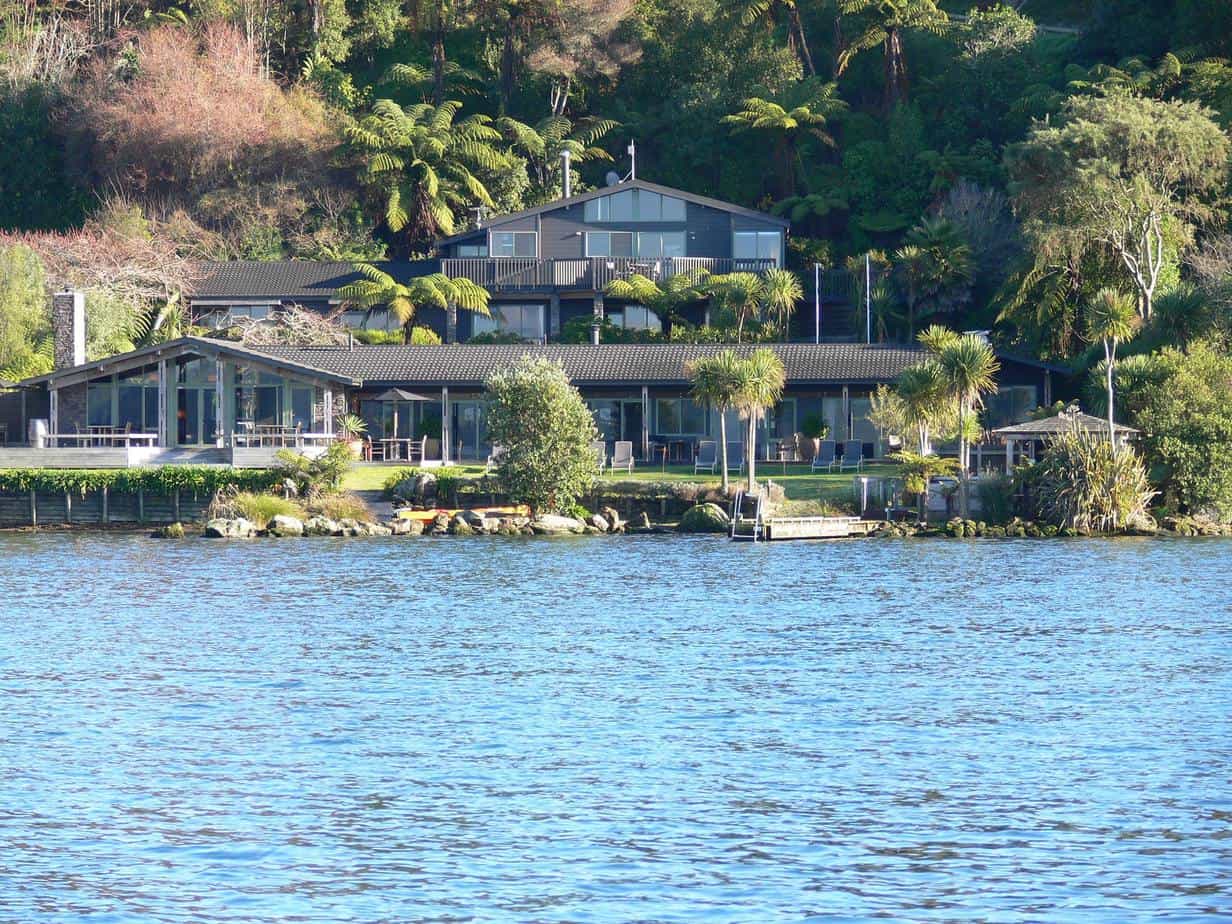2023 UPDATE:
After last June’s torrential floods thrust Yellowstone into the headlines, the US Congress appropriated $1.5 billion in disaster funding for Yellowstone & other national parks reeling from recent natural disasters.
The National Park Service will hire hundreds of desperately needed staff to better protect historical and natural resources, address maintenance needs, and fund more historic preservation and park site interpretation across the USA.
With these increases, NPS will hire hundreds of desperately needed park staff to better protect our parks’ historical and natural resources, address longstanding maintenance needs, and fund more historic preservation and park site interpretation across the country.
– from the National Parks Conservation Association

Yellowstone National Park, America’s Largest Park
Don’t be afraid to visit America’s most beloved national park in 2023.
Yellowstone National Park will astound you with its magnificent geothermal wonders and abundant wildlife, yet there’s so much to know before visiting. Here’s my guide and my best tips for Yellowstone travel.
Traveling south on Montana’s Highway 191 to the West Yellowstone park entrance, we veered into a corner of Yellowstone National Park and unknowingly entered elk territory.
My eyes grew as wide as Laura Dern’s in the film “Jurassic Park” when she spied her first dinosaur.
“Oh, my God, look at what’s running towards us!”
“I think it’s elk,” said Rob, my husband.
A herd of dusty-grey elk galloped on long, slender legs on the Gallatin Valley roadside.
And we’re the interlopers.
As Yellowstone National Park’s most abundant mammal, the elk have lived here for at least 1,000 years. During summer, up to 10,000 – 20,000 elk in distinct herds populate the backcountry.
This encounter launched a packed week of reveling in wildlife spotting as if on an African safari.
With my camera ready, I prepared to shoot tons of photos, expecting sightings of bison, elk, bald eagles, mountain goats, antelope and 300 species of birds.
Until disaster struck during an eruption of Old Faithful.
Founded on March 1,1872 as the world’s first national park, in 2022 Yellowstone National Park celebrates its 150th year. This beloved sanctuary became ours forever, preserving unique hydrothermal wonders, abundant wildlife, pristine lakes, alpine river valleys. Even the dramatic Grand Canyon of Yellowstone River.
Large enough to become a state, Yellowstone National Park’s 2.2 million acres lay mostly in Wyoming but also sprawl into Idaho and Montana. And only 1% of park land is developed.
Last year, Yellowstone had its busiest June on record, hosting nearly 1 million visitors.
But June’s torrential floods thrust Yellowstone into the headlines and, though most roadways are open, the park may lose visitors this summer. According to Vox, this drop in visitors will be a boon for wildlife.
Wildlife Dangers

Watch out for bison, read the sign said on Highway 20 in the Madison River Valley. Amid snow flurries with temperatures hovering around 30 degrees, Following the park’s 45-mile-an-hour speed limit, I kept watch.
Along the shore of the Madison River, it wasn’t long before I spotted a herd of grazing bison, still shaggy with winter coats, a part of the oldest continuously living herd of American Buffalo.
Suddenly, I came up a single buffalo walking down in the middle of the two-lane road. As I rolled by him at a slow speed, his head appeared as large as several basketballs. He turned his massive head toward my car window and one eye stared at me.
I’m in his territory, I thought.
His bulky body veered off the asphalt to negotiate a narrow path sloping down to the Madison River.
Yellowstone is home to the largest collection of bison on public land in the US, around 5,000 animals in two major groups, according to the BBC.
Later that week, I watched a buffalo herd bring traffic to a dead stop and invade a Mammoth Springs parking lot.
As North America’s largest land-dwelling mammal, bison can weigh up to 2,000 lbs. And bison attack when threatened. Plus, they’re extremely fast, speeding up to 35 mph.
In May and June 2022, bison have gored three people – all because these tourists got too close to the animals.

It’s illegal to get too close to Yellowstone National Park wildlife.
National Park Service rangers warn visitors to stay at least 75-feet, the length of a tennis court, away from bison. In fact, all park wildlife is unpredictable and dangerous, especially females with their young. Attacks are common where animals may become more stressed, near campsites, roads, walkways and parking lots.
Elk attack humans when an elk calf is nearby.
Ravens climb into car windows, searching for food.
And bears? Bears will simply kill you.
Yellowstone’s Geysers and Hot Springs

Yellowstone National Park is basically a 3,500-square-mile recreational wilderness atop a volcanic hot spot.
Yellowstone, like a writer’s mind, operates in extremes. The bubbling miasma of a massive caldera lies underneath the earth’s surface, a horrible hell of sulfuric acid and toxic gases. The park floats above this magma pool on a thin crust only 3.5-mile-thick.
A geyser’s super-heated steam jettisons through the earth’s crust to spew into a blue sky. The opalescent pools, the raging geysers, the sapphire hot spring waters, the lonely fumaroles will vent from the Earth one day only to disappear days later.
Here, the largest number of undisturbed hydrothermal features anywhere are protected. In fact, half of Earth’s one thousand geysers, hot springs, mud pots, and fumaroles boil, steam, spit and explode, preserved in perpetuity.
In Norris Geyser Basin, the hottest, most acidic hydrothermal area, opalescent pools turn muddy and rivulets of geyser water are stained rabid green by Cyanobacteria. Geysers appear and disappear while the Black Growler Steam Vent spews as violently as an oil gusher from a crack in the ground.
Mammoth Hot Springs’ Travertine Terraces
At Mammoth Hot Springs, hot waters rich in calcium-carbonate in contact with the cooling air pour over old limestone deposits, forming thick travertine terraces. In fact.
As blue pools of hot spring water overflow and run downhill, you can hike on the boardwalks winding past these otherworldly pools, ledges and plateaus. Take care to stay on the boardwalks and trails; walking on the fragile ground could collapse and that spells disaster.
Four Thermal Features along the Fountain Paint Pot Trail
In Lower Geyser Basin between Old Faithful and Madison Junction, walk on the half-mile boardwalk loop of the Fountain Paint Pot Nature Trail. Here, you’ll take in four kinds of thermal features, colorful, bubbling mud pots, swaths of steamy fumaroles, the Clepsydra geyser and the Silex Hot Spring.
The Grand Prismatic Spring in Midway Geyser Basin

The reigning superstar of Yellowstone National Park, nature creates the psychedelic Grand Prismatic Spring’s crystalline beauty with multi-colored, microscopic organisms called thermophiles.
Found in in the Midway Geyser Basin, the park’s largest hot spring measures 370 feet in diameter and more than 121-feet deep.
Start early to find a parking space. Then follow the boardwalk past the Opal Pool, the Turquoise Pool and the Excelsior Geyser.
As buffalo graze peacefully in this steamy landscape, all this geyser and pool water transforms into a hot river pouring into the Firehole River below.
For the best view, skip the tight parking lot and hike the nearby Fairy Falls trail, which leads right above the Grand Prismatic Spring for great photos.
Legendary Old Faithful Geyser

The inspiration for preserving this area as a national park, Old Faithful attracted mountain men and inspired expeditions to explore Yellowstone’s wonders.
Bursting forth like clockwork, the times of this unique geyser’s blasts are posted everywhere in Old Faithful Village.
And that’s why I stood in a sleet storm in 25-degree weather last May, awaiting Old Faithful’s hot water spew from deep in the earth. I had planned to shoot Old Faithful from a greater height at an overlook on the Geyser Hill loop trail. But the snow had obliterated the trail.
In the cold, Old Faithful’s hot water jets disappeared into billows of steamy clouds, blocked the green trees beyond that could’ve provided contrast to the water jets.
I couldn’t make out the glory of the geyser’s power against the white out conditions of a mid-May snowstorm.
I snapped away until my camera abruptly stopped. Oh, I thought, it’s too cold. So, I tucked it inside my parka to warm it up and try later. Later, I still could shoot photos, yet my view screen was inoperable as the menu buttons. I didn’t know it but my camera was designed to operate in temperatures above 32 degrees. As I shot in 25-degrees in sleet and snow, my camera died while surrounded by a photographer’s paradise. To paraphrase Monty Python, it is now an ex-camera. I muddled through and managed some decent shots.
Yellowstone Photography Tips
The concentrations of wildlife in the Yellowstone and Lamar River valleys between Mammoth Hot Springs will entice any level of photographer. As well as along the Firehole River where herds of bison graze as hydrothermal features steam away.

As tempting as overhead shots are, leave your drone at home – they’re illegal in Yellowstone National Park. Instead, take advantage of the park’s infinite photo opportunities for nature and wildlife with boots on the ground.
Here are my top tips for great shots and safe shooting:
- Never stop on the road – always use roadside pull-outs
- Stay on boardwalks and trails in thermal areas
- Use a zoom lens, not your feet, to get closer wildlife shots
- Climb to a higher view of a landmark and avoid the crowd
- Shoot at dawn, in sunset’s golden light or the clear nighttime sky
The Best Time to Visit Yellowstone National Park
By the end of May into June, July and August, hundreds of thousands pack the park, creating more traffic and long wait times at popular landmarks. Peak season in Yellowstone begins at the end of April and runs until mid-September. By autumn, the crowds of summer give way to smaller visitor numbers, even less in the spring.
Visiting during the off-season months of April, September and October brings out the best of Yellowstone wonders. You’ll enjoy thinner crowds and an excellent chance of catching views of the abundant wildlife.
Yet, be prepared for snow, rain and high winds anytime of the year. I started our long-awaited Yellowstone adventure in early May, when we confronted snow and sleet and daytime temperatures in the 20s, dropping to 12-degrees at night.
Yellowstone National Park Safety
Driving in Yellowstone
Besides soft shoulders and potholes, a Yellowstone road hazard could be a 2,000-pound bison. But getting gored by a bison or snared by a bear are the least of your worries. The most common cause of injury and death in Yellowstone are traffic-related accidents.
On twisting and steep roads, the park’s speed limit throughout is 45 mph. Always drive cautiously, keeping a watch for wildlife.
And prepare for abrupt standstills at any time; traffic in both directions will stop for bear or bison crossings or a crowd of birders shooting a Bald Eagle.
Carry Bear Spray

The entire Yellow Stone National Park is black bear and grizzly habitat, from thermal area boardwalks to the backcountry. Always carry bear spray, a non-lethal deterrent when hiking.
Locally, pricey bear spray canisters cost $60-$80 and cannot be transported on your plane home. I found an easy solution at TrailQuipt.
I rented a cannister with a handy holster at their vending lockers found at 121 Madison Street in West Yellowstone, MT. My five-day rental cost $55. And I learned how to use bear spray here.
Feeling Dizzy? You May Need Oxygen
The Yellowstone Caldera has an elevation of 9,203’, presenting the risk of altitude sickness. Your doctor can prescribe altitude medication; start taking it before your trip. If you feel miserable, bring cans of oxygen, which are easy to buy online.
Thermal Basin Safety

A thin, breakable crust surrounds hot springs and geysers, which boil at temperatures fatal to humans. Due to these dangerous conditions, follow these tips:
- Always keep your children close
- Stay on boardwalks and designated trails
- Pets are forbidden in thermal areas
- If you feel sick, leave immediately to avoid exposure to toxic gases
- Never touch or swim in thermal features or runoff
- Never throw objects into hot springs or thermal features as clogs can be dangerous
Yellowstone National Park Travel Information
Larger than Rhode Island and Delaware combined, covering Yellowstone’s 3,472 square miles daunting. Only 1% of the park is developed.
Near the park’s west entrance, we stopped at the Chamber of Commerce of West Yellowstone, 30 Yellowstone Avenue, to buy our $35 7-day vehicle pass and pick up a map of the open roads.
You’ll find seven more Visitors Centers throughout the park for information and geyser predictions for six geysers, including Old Faithful. Helpful rangers can help you with permits for fishing, boating, even for your wedding in the park.
After June, 2022’s disastrous flood damage, be aware that the North park entrance at Gardiner, MT and the Northeast entry in Cooke City/Silver Gate, MT are closed to private vehicles. Only commercial tours, bikes and foot traffic may enter.
To stay abreast of Yellowstone visitor alerts, from road closures, inclement weather, landslides, floods, wildfire and bear activity, check out:
- The park’s main website
- The free official NPS app for interactive maps, info on park tours, geyser predictions and much more.
- Immediate park news via Twitter – @YellowstoneNPS
- Geyser predictions on Twitter – @GeyserNPS
- Call Yellowstone National Park’s phone number: 307.344.7381.
- Or simply enjoy a geyser webcam here.
Airports Near Yellowstone National Park

How to get to Yellowstone? It’s not easy.
You can fly into Bozeman, Montana, Jackson, Wyoming, Idaho Falls, Idaho or Salt Lake City, Utah, and rent a car to drive to a park entrance.
Be sure to note that the park’s north entrance is closed for the season.
Yellowstone National Park Pass
Although you may not need a reservation to enter Yellowstone, you will need to buy a park pass. Subject to change, here’s a rundown of Yellowstone National Park passes and fees:
- Private vehicle: $35 – 7 days
- Motorcycle, Snowmobile $30 – 7 days
- Single entry via foot, bike, ski, 16+ yrs. old $20 – 7 days
- Yellowstone Annual Pass – $70
- Annual Pass – $80 (for all public lands with an admission fee)
- Access Pass for the disabled – Free (Lifetime for all National Parks and public lands)
- Senior Pass, a one-time purchase age 62+ – Free (for all public lands with an admission fee)
- Annual Senior Pass – $20
- Senior Pass, a one-time purchase 62+ – Free (for all public lands with an admission fee)
- Military Pass/Gold Star – Free
- 4th and 5th grader pass – Free (get vouchers here)
For more, go to the Fees & Passes page.
Yellowstone National Park Lodging

Reserve early – lodge rooms, cabins and campsites fill up months in advance. And expect long hold times, if calling.
Yellowstone National Park lodging ranges from cabins and lodges. Clean and well-run, don’t expect WIFI, air-conditioning or a flatscreen in your accommodation. However, WIFI is available in public areas. Nightly room tariffs per night range from:
- $200 and up for cabins
- $300 and up in a lodge
To reserve your spot, contact Yellowstone National Park Lodges.
Mammoth Hot Springs Hotel
Unfortunately, after the spring’s devastating floods, the Mammoth Hot Springs Hotel remains shuttered for the rest of 2022.
Yellowstone Camping
Yellowstone has 12 campgrounds with 2,000 sites for tents and RVs; site fees start at $20 up to $83 for RVs. Camping in pullouts, picnic grounds, parking lots or elsewhere is forbidden.
Backcountry camping permits cost $15 per person per night at 293 designated campsites. For the early access lottery, happening every March, participation costs a $10 non-refundable fee.
For Yellowstone campground reservations, contact Yellowstone National Park Lodges for these campgrounds:
- Bridge Bay
- Canyon
- Fishing Bridge RV Park
- Grant Village
- Madison (extremely popular)
Reserve at Recreation.gov for the seven campgrounds below:
- Indian Creek (closed in 2022)
- Lewis Lake
- Mammoth (closed in 2022)
- Norris (closed in 2022)
- Pebble Creek (closed in 2022)
- Slough Creek (closed in 2022)
- Tower Fall
Dining in Yellowstone National Park
Frankly, I found a food desert in Yellowstone dining options, which lacked in affordable, good quality, fresh food. Casual eateries offered only fast-food fare and may keep limited hours. Reservations at the fancier restaurants, such as the Old Faithful Inn Dining Room or the Lake Yellowstone Dining Room, require so book ahead.
Prepare for erratic hours and service caused by a park crisis in finding service help. I found that the park’s dining website had posted inaccurate info on what’s open and closed. For example, an Old Faithful Village breakfast spot listed as open remained closed until lunchtime. During my visit there, only the Snow Lodge’s Obsidian Dining Room offered breakfast, a $15 buffet with cold food and missing breakfast items.
And note that the following restaurants are closed in 2022:
- Roosevelt Lodge Dining Room
- Mammoth Terrace Grill
- Mammoth Hotel Map Room Bar
- Mammoth Hotel Gift Shop
Yellowstone National Park Weather
Some say that Yellowstone has only two seasons, summer, July and August, and winter.
So, come prepared for all kinds of weather. During our May visit, daytime temps ranged from snowing in the 20s to sunny days in the 50s with nighttime temps dropping as low as 12 degrees.
During springtime, bundle up for snow and sleet showers. In the summer, be prepared for afternoon thunderstorms or floods.
In winter, the park sleeps beneath a thick blanket of snow with roads closed to vehicles. In cold temperatures that freeze lakes and waterfalls, visitors explore snowy landscapes via snowmobiles and snow-coaches, skis and snowshoes.
Pack layers of clothing, everything from cold weather and rain gear to bathing suits. Bring sturdy hiking shoes, a warm hat and sunscreen as well as handy items, a day pack, water thermos and downloaded map apps.
To plan your day, check out the weather forecast on the National Weather Service website.
Leaving Yellowstone National Park

Despite severe weather and dismal food options, Yellowstone National Park’s wonders and magnificence made numb hands and frozen faces worth every second. I returned from Yellowstone inspired. How can such an astounding place not inspire?







